Sustainability
How manufacturers are working to improve sustainability
Food and beverage processors are making strides to improve environmentally friendly operations in their plants.
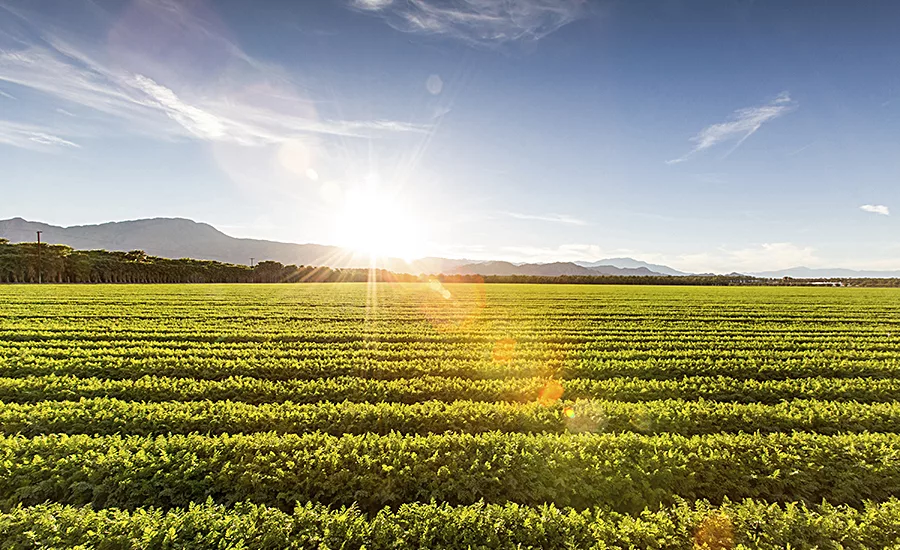
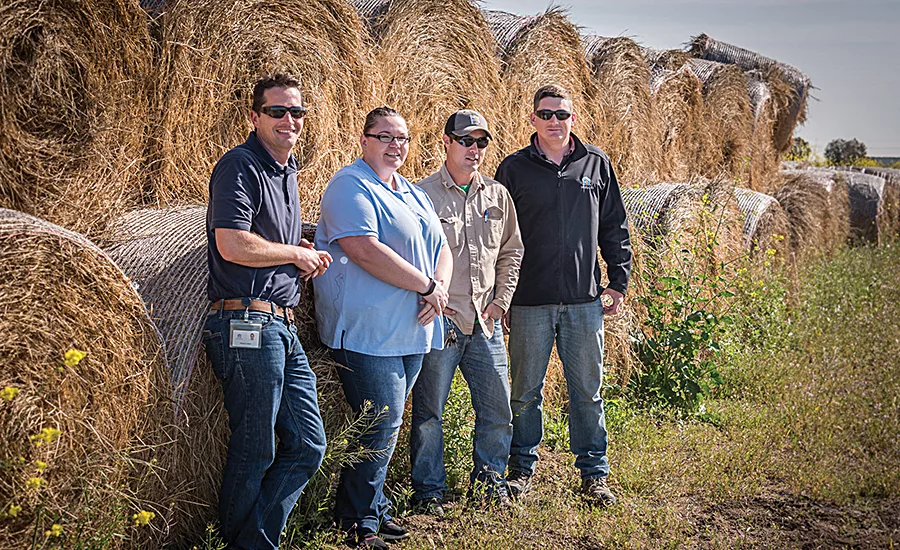
Musco Family Olive Company’s sustainability team out in the fields in Tracy, where they are pictured with bales of NYPA grass. From left to right: Dennis Leikam, environmental manager; Amanda Devlin, environmental health and safety coordinator; Kelly Hegman, farm manager; and Dennis Williams, environmental technician. Source: Sam Burbank.
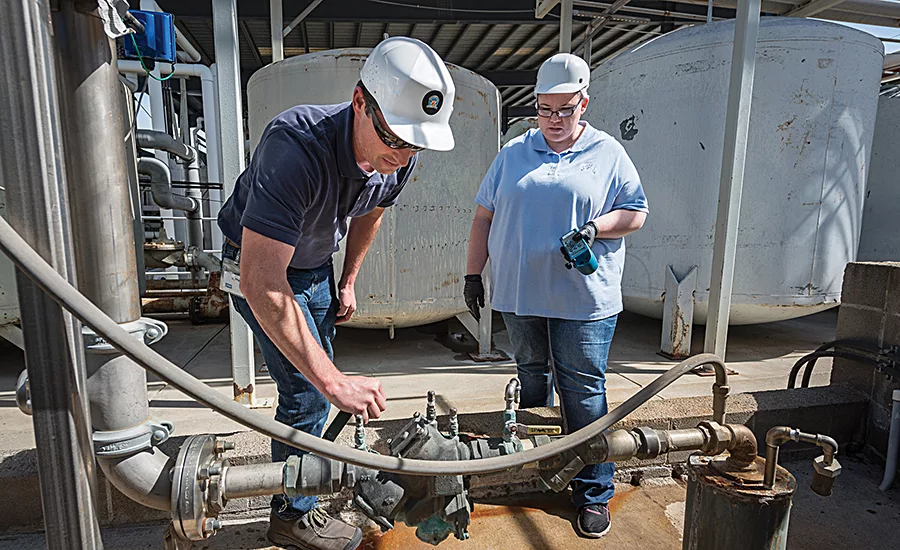
Dennis Leikam and Amanda Devlin check water usage. Source: Sam Burbank.
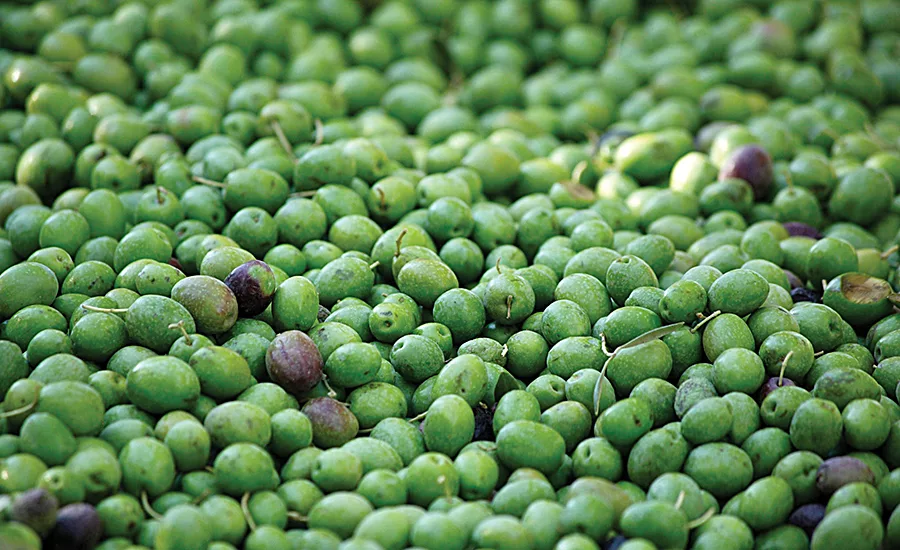
California olives during the harvest. Source: Sam Burbank.
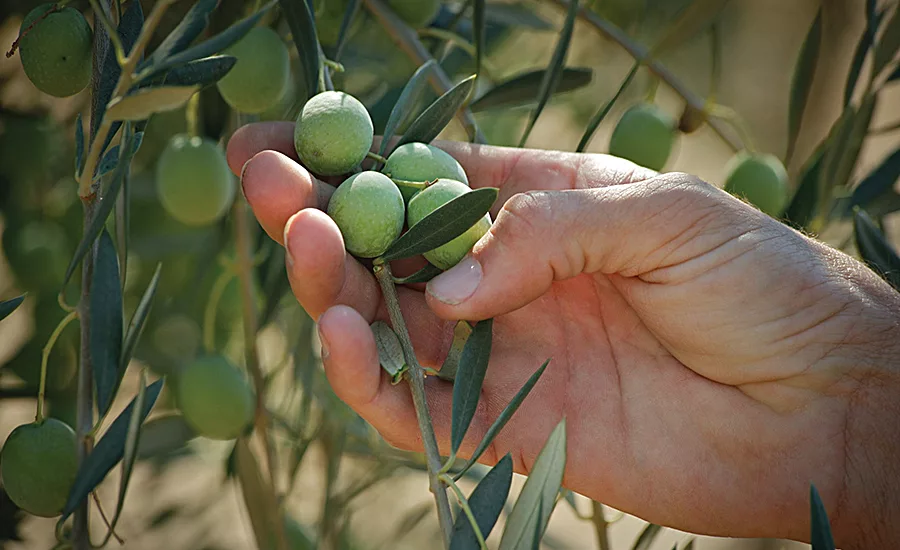
California olives during the harvest. Source: Sam Burbank.
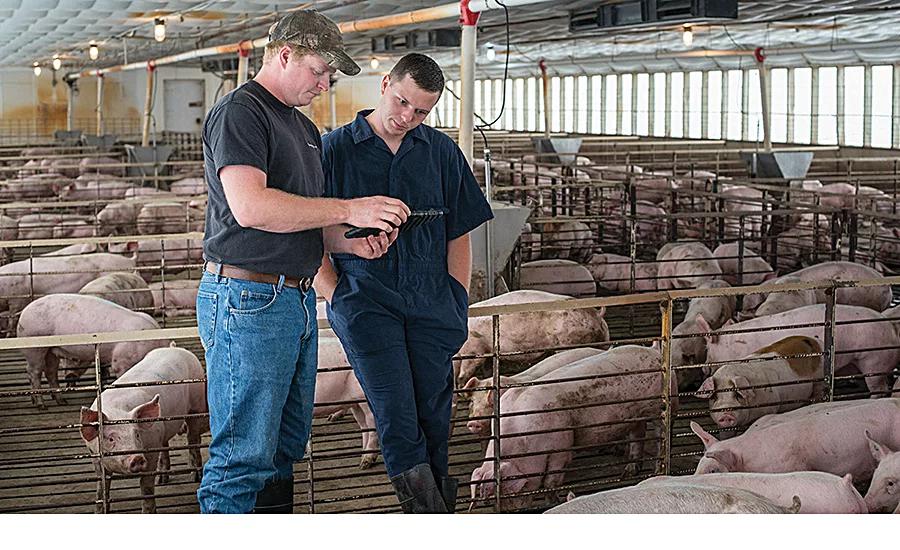
Smithfield Foods is the first pork company to publish an ingredient glossary, an online resource that lists and describes ingredients used in products across Smithfield and its family of brands. Source: Smithfield Foods.
In this current climate, where consumers’ perceptions and desires are becoming serious forces to reckon with, the sustainability of food and beverage companies is quickly moving from an option for processors to consider to an imperative. In a recent survey entitled Packaging Matters, packaging solutions provider WestRock found 98 percent of the surveyed consumers indicated sustainable practices are extremely or very important to their view of a CPG brand.
Article Index:
- What sustainability means
- Protecting the environment: A holistic approach
- Reducing water risks
- Ethical sourcing
- Packaging reduction
- Measuring and communicating
With more emphasis being put on sustainability, the food and beverage industry is responding with programs and projects that focus on pollution prevention, conservation efforts, recycling initiatives and more. In fact, Food Engineering is creating an awards program to honor plants with improved performance in sustainability and individuals who seek to go beyond environmental compliance. What follows here are a few examples of what some companies are currently doing and how some suppliers are making it a point to help processors reduce their footprints. Some of these companies were winners of OpX Leadership Network’s Sustainability Excellence in Manufacturing Awards, presented at Food Engineering’s Food Automation & Manufacturing Conference last April.
What sustainability means
The word sustainability is increasingly becoming a catch-all term referring to a number of things, such as using recyclable materials, minimizing greenhouse gas (GHG) emissions, partnering with community groups and NGOs, transparency, protecting farmers and farm land, water conservation, reducing emissions, increasing energy efficiencies and more. Oxfam, an international group of charitable organizations, recently ranked food and beverage companies based on a “scorecard” comprised of seven themes, which are corporate transparency, addressing women’s issues, protecting workers, protecting farmers, land issues, water issues and working to minimize climate change.
The Grocery Manufacturers Association released the 2016 Environmental Success Stories report based on three defined areas of environmental sustainability: air, waste and water. According to the GMA’s criteria, food and beverage companies’ success stories that were selected “demonstrate some or all of the following virtues: innovation in system or product design; monetary savings or quantifiable return on investment; reduction or improvement in efficiency of environmental factors; interaction or collaboration with stakeholders; successfully executed and completed—not proposed or planned.”
Food Engineering has its own set of criteria with the focus being on projects and/or programs that reduce, reuse and/or recycle in the plant and help progress environmental stewardship. Plants do not necessarily have to be certified by LEED, Green Globes or any other organization. However, they should demonstrate either some or all of the following characteristics: preventing pollution as well as protecting the environment; use of creativity and innovation; improving conservation efforts (water, energy, chemicals, etc.); fostering a work culture of environmental friendliness; return on investment; and cost effectiveness.
Protecting the environment: A holistic approach
WhiteWave Foods’ recently released its sustainability report, where the company outlines its efforts and commitment to drive positive change and deliver on its “Changing the Way the World Eats for the Better” mission.
“Our industry faces challenges as the need for action on climate change, water scarcity and other sustainability issues becomes more urgent,” the report states. “For us, addressing these challenges means having a clear sustainability strategy that guides our actions, drives solid goals, and motivates us to achieve them.”
The company’s strategy has three primary pillars. The first is to cultivate a responsive food system, which focuses on ways to improve efficiency, embed sustainability in its products, develop innovative designs and invest in sustainable agriculture and the best ingredients. The second pillar is illuminating better options, which demonstrates openness and integrity through advancing transparency as well as focusing on healthy choices to meet consumers’ changing needs. The third is to empower its employees by inspiring engagement in sustainability and creating positive change in the company, culture and the communities WhiteWave lives and works in.
“We have been measuring our environmental footprint since 2006. From 2006-2013, we reduced our GHG emissions 32 percent,” says Deanna Bratter, director of corporate sustainability for the company. “In just the past two years, WhiteWave has reduced waste to landfill by 52 percent by focusing on reducing waste and increasing reuse and recycling.”
Smithfield Foods’ sustainability program is organized on five key pillars: animal care, environment, food safety & quality, helping communities and people. The company recently released its 2015 Sustainability & Financial Report, which highlighted several achievements, such as clarifying use of antibiotics in farm animals, establishing an ingredient glossary and making significant progress in its natural resource reduction targets. The report also noted the company met its normalized GHG emissions reduction goal and nearly met its energy reduction target four years ahead of its 2020 deadline.
“Smithfield’s sustainability program has ignited change throughout the company’s operations in several ways,” says Stewart T. Leeth, vice president of regulatory affairs and chief sustainability officer for Smithfield Foods, Inc.
Included in this has been to put in place different animal care management systems, policies and procedures to ensure the proper treatment of hogs. Leeth says this can influence the reputation and the relationships Smithfield has with customers and consumers as well as help the production levels of the animals.
“Healthy animals are more resistant to disease, gain weight faster, and healthy sows have larger and stronger litters,” he says.
Moreover, in 2015, Smithfield reorganized all independent operating companies under one corporate umbrella. After this, the company optimized its logistics network to improve efficiencies, reduce complexity, lower operating costs, decrease the company’s carbon footprint and improve customer service. Additionally, six Smithfield facilities have achieved zero-waste-to-landfill status, thus, no longer providing solid waste to landfills or incinerators.
To increase employee engagement, WhiteWave has an annual Wave Awards program where employees can nominate coworkers who exemplify the company’s values. The One Wave Award is designed to highlight the best actions across the organization to promote social and environmental sustainability.
Along the same line, Big Heart Pet Foods, which won third place in the program category for the OpX 2015 Sustainability Excellence in Manufacturing Awards, has worked to encourage its workers to actively participate in sustainability efforts. The company has a program where employees at the Milk-Bone plant in Buffalo, NY bring their electronic waste into work to divert the hazardous materials from landfills.
The company also works to bring positive change to its surrounding community by donating the plant’s recycling proceeds to a number of local organizations. Scrap metal proceeds went to GoBike Buffalo, which works to develop biking infrastructure. Wood pallet recycling proceeds went to Re-Tree Western New York, which works to reforest local areas.
“The money allowed for additional tree plantings—turning scrap wood into saplings,” says Michael Jackson, distribution supervisor for Big Heart Pet Foods.
Additionally, paper recycling proceeds went to the Buffalo and Erie County Public Libraries, which helps turn paper scrap into new books. Electronic waste proceeds went to Camp Good Days and Special Times, which benefit children with cancer. For Milk-Bone, these initiatives exemplify how reducing plant waste benefits not just the company, but also the community.
“The program was started to try to provide direct and tangible benefits to the Buffalo community via our waste reduction efforts,” Jackson says, “to go from making an abstract impact on ‘the environment’ to making a direct and visible positive environmental impact on the city of Buffalo.”
Reducing water risks
According to the United Nations, approximately one-fifth of the world’s population live in water-scarce areas and another quarter of people face a water shortage. With these numbers, the importance of water as a commodity becomes clear.
“We have a strong water use reduction strategy at WhiteWave,” says Bratter. “We work with World Wildlife Fund to assess water risk for our operations and key suppliers worldwide that allow us to better understand our impacts and opportunities.”
WhiteWave measures and monitors water use in all of its company-owned manufacturing plants. The current goal is to reduce the water intensity, or gallons of water used per pound of product, by 20 percent by the end of 2025. Since 2013, the water intensity company-wide has been reduced by 6 percent.
The company also works with nonprofit Bonneville Environmental Foundation to invest in projects that balance a portion of the company’s water footprint with Water Restoration Certificates (WRCs). For each WRC, 1,000 gallons of freshwater is restored to critically dewatered ecosystems, rivers and streams. WhiteWave’s WRC commitments have restored more than 1.9 billion gallons of water since 2009.
“In 2015, WhiteWave’s largest manufacturing plant in Mt. Crawford, VA completed the first phase of a wastewater treatment project in which more than 55 percent of the water consumed by the plant’s cooling tower can now be reused,” says Bratter. “This saves our plant over 35 million gallons a year, shrinking the plant’s water footprint by 10 percent.”
In areas like California, reducing water usage is absolutely a necessity. In the program category for the OpX 2015 Sustainability Excellence in Manufacturing Awards, Olam Spices and Vegetable Ingredients won first place for its water conservation program in its tomato processing plant in Lemoore, CA. The plant is located in an “exceptional drought” area in California, so freshwater usage had to be reduced.
“In partnership with Base Energy Company, Olam SVI conducted a plant-wide audit to identify dual opportunities in water and energy consumption,” says Morgan Campbell, sustainability coordinator for the company. “Key conservation projects included: the installation of steam condensate return systems, recycling pump seal water and redesigning aseptic fill processes.”
In less than five months, these actions reduced the plant’s freshwater consumption by 9 percent and saved more than $13,000 on electricity pumping costs. This was not only good news for the company, but the local community as well. The reductions in municipal water usage resulted in Olam performing above and beyond the city of Lemoore’s mandated 32 percent freshwater consumption reduction target.
“Olam’s strategic partnerships and transparent communication have enabled the company to remain a solutions-driven partner throughout its integrated supply chain,” says Campbell.
Ethical sourcing
More food and beverage companies are looking into their suppliers and the sources of ingredients to ensure all levels of their production processes are on the up and up as well as using fair labor practices. The second place winner of the OpX 2015 Sustainability Excellence in Manufacturing Awards program category was Musco Family Olive Co. in Tracy, CA for its ethical sourcing program.
The company became the first in the world to earn the Food Marketing Institute’s Safe Quality Food Institute (SQFI) Level II Ethical Sourcing Standard Certification. This globally accredited certification is awarded to companies that are committed to ensuring socially and environmentally responsible practices in food production, farm to fork. Companies are honored for proactive management of social, ethical and environmental impacts, not only at their facility, but throughout their supply chain.
“Implementation was an enormous team effort, and the audit focused heavily on responsible supply chain management, human resource practices, social management programs, employee health and safety, management systems for environmental impacts and more,” says Dennis Leikam, environmental manager for Musco Family Olive.
The company already had a robust sustainability program in place comprised of many initiatives, such as tracking water and utilities usage, a farm no-kill policy, zero-waste landfill achievements and sustainable agriculture practices. The SQFI II was used as a vehicle to wrap all these programs into one coherent package as well as add structure to the supply chain management. The company started a purchasing program that allows managers to communicate with the purchasing team in the field in an effort to find the best quality and price. Grades are assigned to possible vendors first in order to make the best decisions.
“We challenged all of our managers to not just use quality and quantity when it came to purchasing and suppliers, but to consider the environmental footprint,” Leikam says. “Purchasing, accounting, IT, every department now investigates and vets our vendors to carefully evaluate before any purchases or spending decisions.”
This affects how and with whom Musco chooses to do business as all of its growers are under scrutiny to ensure they are socially aligned with the company. By doing this, transparency is created, and documents can be used to prove compliance and commitment to ethical sourcing. Because the benefits of this program are intangible right now, this program might not be able to produce a traditional ROI result.
“However, with assurance, we can say to our customers, ‘When you use our product, there is an ethical standard behind every jar, can, cup and olive,’” says Leikam.
Musco views this ethical standard using an historical perspective and compares it to where food safety was a decade or more ago evolving into a mandated multitude of stringent requirements. “This is the next level where grocers, retailers and restaurants are provided assurances from us that ethics are embraced at every step,” Leikam says.
Packaging reduction
Because consumer packaged goods are, indeed, packaged, this is one area ripe for the reduction of materials used. Since packaging faces the consumer, it is especially in the sustainability spotlight. The third place winner of the OpX 2015 Sustainability Excellence in Manufacturing Awards program category was Sunny Delight for its packaging reduction projects across three brands and multiple sizes.
Sunny-D began its sustainability journey in 2007 after its initial effort to reduce packaging material. The company’s first goal was to reduce 25 million pounds of packaging by 2015, but the goal was achieved in 2013. Thus, a new goal was instated, to reduce 100 million pounds of packaging by 2020. The specific packaging reduction program for 2014-2015 had three specific projects: reduction of Veryfine size-specific bottles, reduction in overwrap film and bottle sizes and shape for the Sunny-D brand, and Fruit2O bottle and tray reduction.
“There was some opposition for changing bottle shape and using less plastic and cardboard, but after various trials, we made the change that was better for the consumer and company,” says Amber Brovak, sustainability manager for The Sunny Delight Beverage Company.
The program resulted in saving 2.38 million pounds of packaging over two years. Also, due to the reduction in other costs, such as material, these changes saved the company $1.5 million a year. However, this number might be far greater since savings in costs associated with shipping and handling cases as well as reduced weight for recycling are still uncalculated.
“We continually evolve our packaging to meet shipping and consumer demands while also decreasing waste,” says Brovak. “In addition to the cost benefit of reduced materials, we have seen other advantages like improved shipping efficiency and waste reduction.”
To focus the food and beverage industry’s attention on the impacts of resource scarcity, Tetra Pak recently introduced the Moving to the Front initiative, a call to action for those involved in the packaging life of CPG products.
“Broader embrace and acceptance of using renewable materials from responsibly managed sources that can be regrown over time—in addition to end-of-life practices like recycling—are critical to protecting our world’s finite supply of natural resources,” says Elisabeth Comere, director of environment and government affairs for Tetra Pak. “Further, we believe these practices can create long-term shared value for businesses and society.”
The company reviewed research findings to help better understand the benefits of renewable materials. To help protect and preserve natural resources, experts say a shift to a circular economy framework will be necessary and could generate $1 trillion in economic value, according to Comere. A critical component of this change is using renewable materials from responsibly managed sources in packaging.
“When renewable materials, such as paperboard and bio-based polymers, are used in packaging, companies create a more reliable, predictable and resilient supply of raw materials,” she says. “Further, companies that adopt more renewable materials into their packaging can also enjoy increased consumer brand loyalty, especially as consumer awareness around resource scarcity grows.”
Tetra Pak surveyed a number of consumers and found 83 percent would choose a product that came in a clearly labeled renewable package versus a conventional package. Moreover, using renewable materials can help companies meet corporate environmental goals, such as reducing greenhouse gas emissions.
“Our lifecycle analysis has shown that if 75 percent of a package’s weight is from renewable paperboard, that element of the package only contributes 20 percent of the carbon impact throughout the package lifecycle,” Comere says.
Measuring and communicating
For companies that are realizing they need to employ more sustainable practices, the food and beverage sustainable stars here have a plethora of friendly advice. Just like most things in manufacturing, setting up a measurement and review process is key.
“Complete your research up front,” says Sunny-D’s Brovak. “Set goals, determine how you will track progress and know what to expect from your projects. They may not all work out, and some projects may increase other areas you are trying to reduce, but for a greater benefit overall.”
She stresses that there are many projects that can be started, but some won’t fit with your organization right now. However, that’s not to say they won’t make sense down the line. In six to 12 months, perhaps there will be a bad drought or an energy crisis that could influence your decisions and push the priority of projects up the list.
“The most effective first step in any sustainability program is to really understand what your impacts are and where your greatest opportunities are,” says WhiteWave Foods’ Bratter, “whether that be through a formal materiality assessment or an informal assessment of what is most meaningful to your employees and customers. Once you understand your key impacts, you can start to measure, manage and transform toward your vision for the better.”
To prioritize projects, WhiteWave ties cost savings to the sustainability impacts associated with specific initiatives. The company tries to balance the incremental and smaller steps forward with a few bigger impact and higher-visibility programs within the areas of emissions, energy, waste and water at the plant level.
Milk-Bone’s Jackson encourages everyone to look around and “see how you can make a difference in your community—we can all do something. Start small, and communicate every success.” This might be one aspect of sustainability sorely missing in many food and beverage companies efforts: the ability to effectively communicate their environmentally friendly actions. As the WestRock Packaging Matters study points out, consumers say they want to see more sustainable materials used and sourcing them to be responsible, but many of the companies are doing these things and failing to communicate them.
Most of the companies interviewed for this article communicate their efforts through their websites and/or other social media outlets.
Finding other ways to communicate this, such as via packaging, might be an area for future growth and exploration. But there is one sure thing: the topic of sustainability is here to stay. And as Musco Olive CEO Felix Musco says, “If you’re not ahead of the curve, you are already behind.”
Resources:
WestRock’s Packaging Matters 2016 Report,
www.westrock.com/en/insights#packaging-matters-2016.
Oxfam’s Behind the Brands,
www.behindthebrands.org.
The Grocery Manufacturers Association (GMA) Environmental Success Stories in the Consumer Packaged Goods Industry,
www.gmaonline.org/ file-manager/About/2016_Environmental_ Success_Stories.pdf.
Tetra Pak’s Embracing Value from Natural Capital: Advancing Packaging Solutions that Consumers Want and Companies Can Provide, https://3blmedia.com/media/other/Embracing_Value_from_Natural_Capital.pdf.
WhiteWave Food’s Sustainability Report, www.whitewave.com/csr/
Looking for a reprint of this article?
From high-res PDFs to custom plaques, order your copy today!





